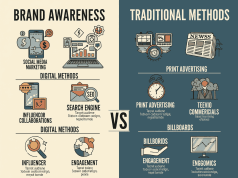In the digital age, influencer marketing has emerged as a revolutionary force reshaping how brands connect with consumers. As social media platforms evolve and audiences become increasingly discerning, brands are leveraging influencer partnerships to foster authenticity and engagement. This article explores the trends driving the rise of influencer marketing and how they are reshaping brand partnerships.
The Shift Toward Authenticity
One of the most significant trends in influencer marketing is the shift toward authenticity. Consumers, particularly younger generations, are wary of traditional advertising and are more inclined to trust recommendations from individuals they perceive as relatable and genuine. Influencers, often viewed as peers rather than marketers, can bridge the gap between brands and consumers.
Authenticity is critical; brands now seek influencers whose values align closely with their mission. This alignment creates a more organic partnership that resonates with audiences, increasing the likelihood of conversions. Brands like Glossier have thrived by utilizing micro-influencers, who may have smaller followings but boast highly engaged audiences. This strategy emphasizes relatability over reach.
The Rise of Micro and Nano Influencers
In tandem with the demand for authenticity is the surge in micro and nano influencers—those with smaller followings but often higher engagement rates. Brands are increasingly recognizing that these influencers can deliver better ROI compared to their larger counterparts.
Micro and nano influencers typically possess niche audiences that share specific interests, allowing brands to target specific segments more effectively. For instance, a fitness brand might partner with a micro-influencer who specializes in home workouts, thus reaching a highly engaged community interested in that content.
Evolution of Content Formats
Another driving trend is the diversification of content formats. Influencers are no longer limited to static posts; they’re engaging audiences through stories, reels, live streams, and interactive polls. This evolution caters to the varying preferences of consumers and encourages a more dynamic engagement with brand messaging.
Short-form video content, notably popularized by platforms like TikTok and Instagram, has become a staple for brands aiming to capture attention quickly. The format inspires creativity, allowing influencers to weave brand messaging into entertaining or informative content that resonates with viewers.
The Role of Data and Analytics
Data-driven decision-making is becoming increasingly crucial in influencer marketing. Brands are leveraging analytics to identify the right influencers based on engagement rates, audience demographics, and past campaign performances.
Platforms such as Upfluence and AspireIQ provide valuable insights, enabling brands to assess influencer authenticity and audience engagement. By utilizing data, brands can optimize their partnerships, tailoring their strategies to maximize impact and ROI.
Emphasis on Long-Term Partnerships
A departure from one-off campaigns is emerging as brands recognize the value of cultivating long-term relationships with influencers. Long-term collaborations allow for deeper brand storytelling and can enhance audience trust.
When influencers consistently promote a brand over time, they can establish themselves as credible advocates, further solidifying consumer loyalty. Brands like Nike have successfully employed this strategy, partnering with athletes and fitness influencers to create ongoing narratives around their products, fostering a sense of community.
Navigating Compliance and Transparency
With the rise in influencer marketing, regulatory scrutiny has also increased. Brands and influencers must navigate the challenges of compliance and transparency, especially regarding sponsored content. Regulations by bodies like the Federal Trade Commission (FTC) require clear disclosure of paid partnerships.
Consumers are growing increasingly aware of these regulations, and transparency is becoming a non-negotiable aspect of influencer marketing. Brands that prioritize compliance and practice ethical marketing earn consumer trust, allowing for stronger brand loyalty over time.
Conclusion
The rise of influencer marketing continues to reshape the landscape of brand partnerships. As authenticity, micro-influencers, diverse content formats, data-driven strategies, long-term collaborations, and compliance take center stage, brands must adapt to these trends to thrive in a competitive marketplace. By cultivating genuine connections with audiences through influencer partnerships, brands can navigate the complexities of the digital marketing landscape, driving engagement and fostering lasting relationships with consumers. As we look to the future, it’s clear that influencer marketing is not just a fleeting trend; it’s a pivotal component of modern brand strategy.









